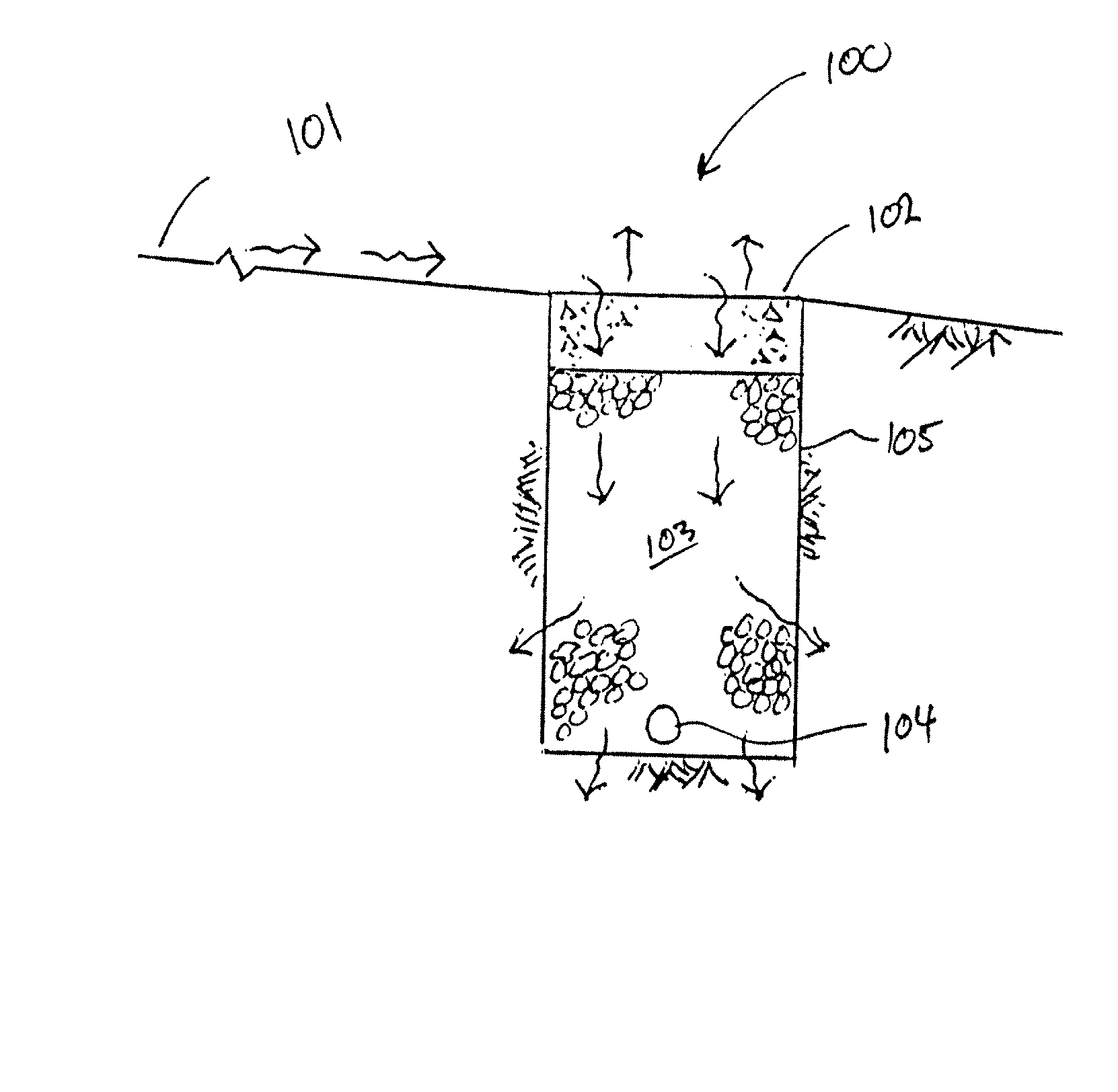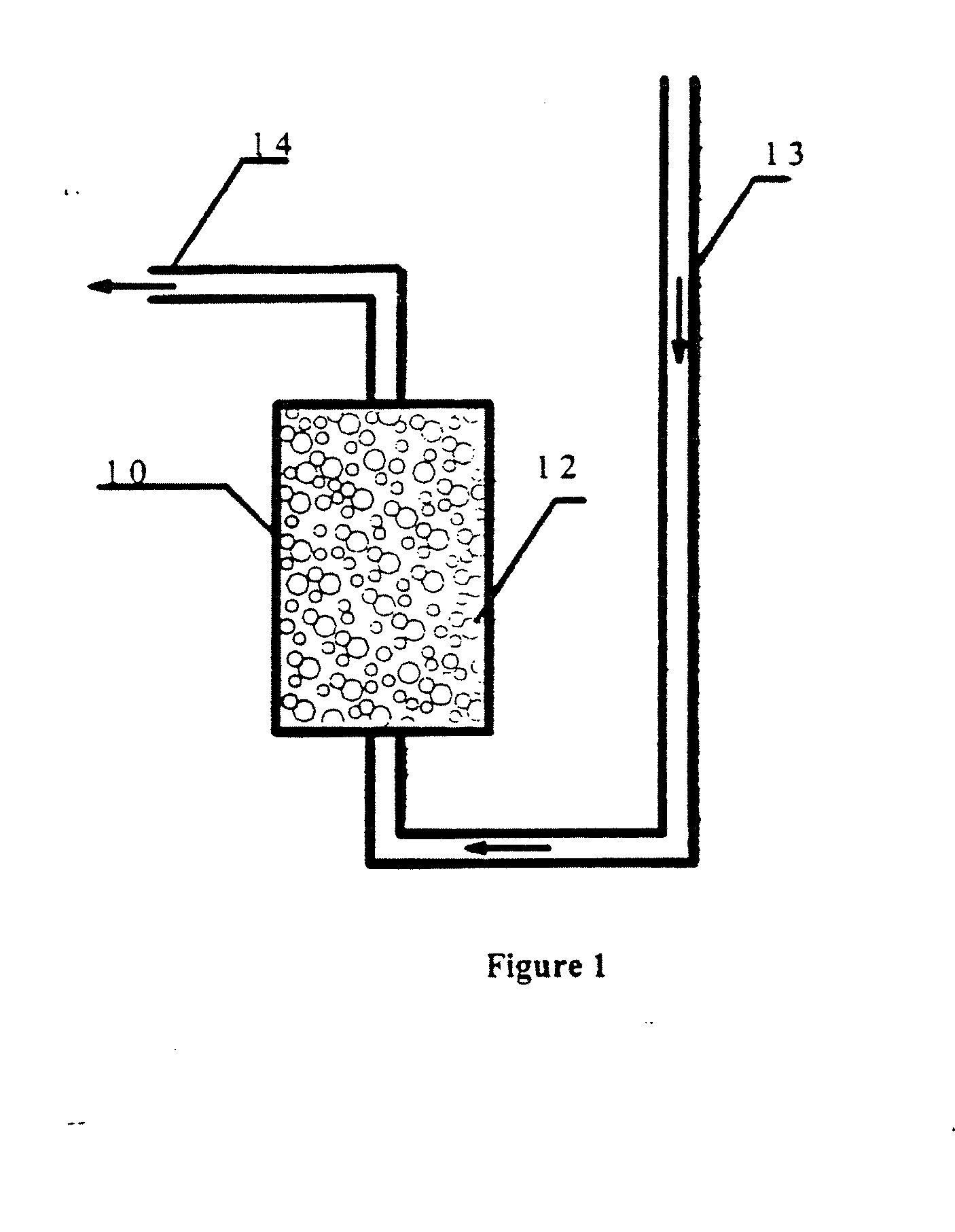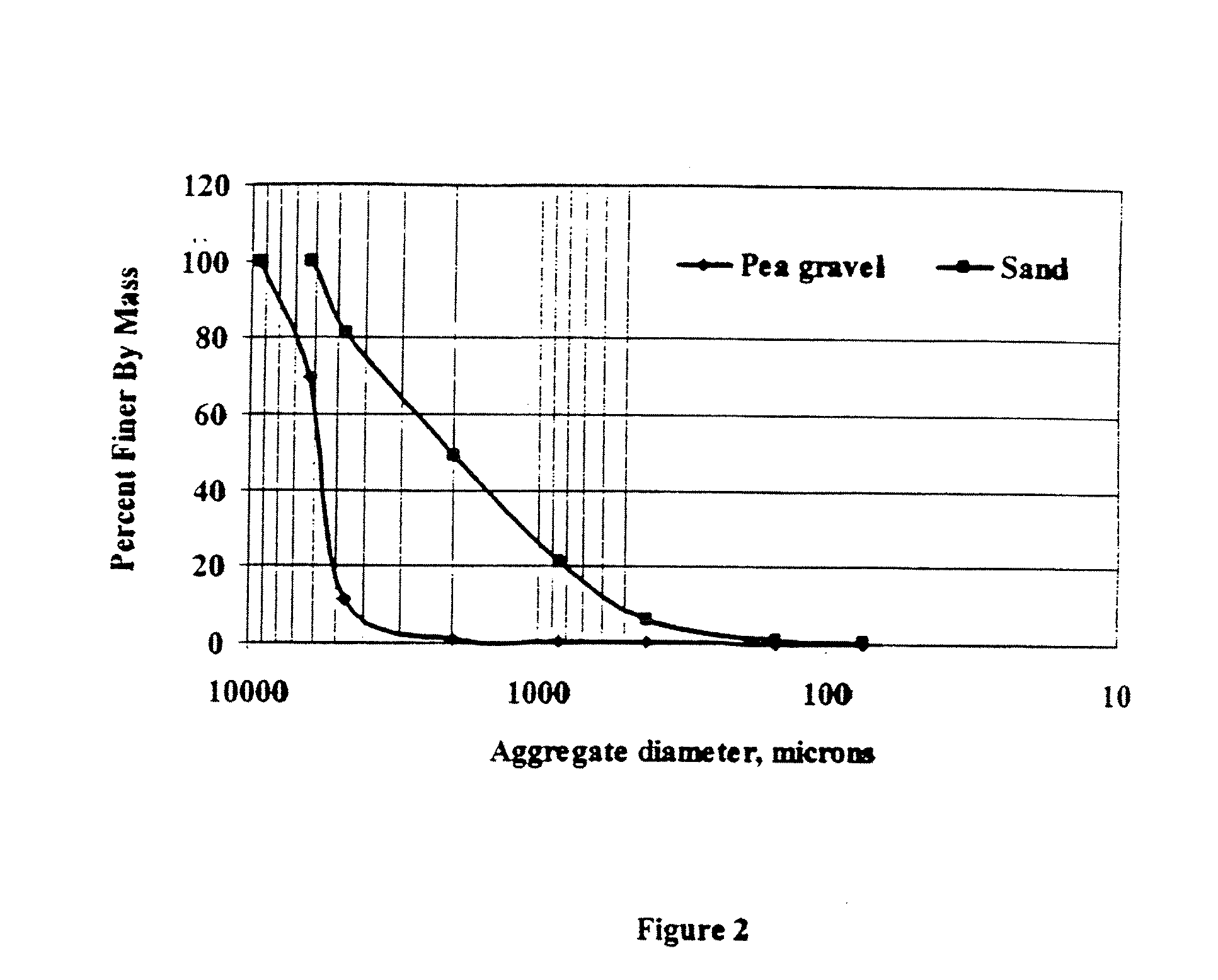Clarification and Sorptive-Filtration System for the Capture of Constituents and Particulate Matter in Liquids and Gases
a technology of constituents and filtration systems, applied in separation processes, sewage draining, ways, etc., can solve the problems of inability to support vertical, lateral or shear loads, and low compressive strength of gac,
- Summary
- Abstract
- Description
- Claims
- Application Information
AI Technical Summary
Benefits of technology
Problems solved by technology
Method used
Image
Examples
embodiment 1 through 4
9. Embodiment 1 Through 4 Composed of Cementitious Substrate and Amphoteric Admixture or Amphoteric Coating
[0119] Another embodiment of the present invention includes a sorptive-filtration media which comprises a substrate of cementitious material such as created with a portland cement, lime-cement, combination of calcium-alumina-silica, or a material with pozzolanic attributes combined with an metal oxide or metal salt admixture in the cementitious material. One example of such an embodiment is described. The formulation can be scaled to meet specific media amount requirements, or altered to fit porosity, bulk density, surface area or surface charge requirements. This example illustrates an amphoteric coating process for aluminum oxide. However, the coating can be comprised of an oxide of iron, manganese or silicon or a combination of these oxides as described above.
[0120] 1. Mix portland cement and clean water at a water / cement (w / c) ratio of approximately 0.3 to 0.7. In one embo...
embodiment 1 through 5
12. Embodiment 1 Through 5 With a Cemented or Metamorph of Clay or Silt Substrate
[0128] Another embodiment of the present invention includes a sorptive-filtration media which comprises a clay or silt substrate that has been cemented or has undergone metamorphosis through heating and / or pressure and / or chemical modification. Cementing of clay or silt substrates to form sorptive-filtration media or aggregates can be carried out with Portland cement, lime or cementing agents that are used to form larger aggregate media from binding much smaller clay or silt particles together. Media size ranges can have equivalent diameters between 0.01 mm and 500 mm.
13. Embodiment 12 WITHOUT an Amphoteric Coating
[0129] Another embodiment of the present invention includes a sorptive-filtration media which comprises a clay or silt substrate that has been cemented or has undergone metamorphosis through heat and / or pressure and / or chemical modification and no amphoteric coating.
embodiment 1 through 13
14. Embodiment 1 Through 13 With a Particle Size Range from 0.01 mm to 500 mm
[0130] Another embodiment of the present invention includes a sorptive-filtration media ranging in size from 0.01 mm to 500 mm. Below 0.01 mm, hydraulic conductivities are too low for the medium to function effectively as a filter at common surface loading rates between 0.1 and 10 gallons / ft2-minute and above 500 mm, specific surface area, pore size and residence times are too large to have a significant benefit on treatment for particles or solutes.
PUM
| Property | Measurement | Unit |
|---|---|---|
| specific surface area | aaaaa | aaaaa |
| hydraulic conductivity | aaaaa | aaaaa |
| specific gravity | aaaaa | aaaaa |
Abstract
Description
Claims
Application Information
 Login to View More
Login to View More - R&D
- Intellectual Property
- Life Sciences
- Materials
- Tech Scout
- Unparalleled Data Quality
- Higher Quality Content
- 60% Fewer Hallucinations
Browse by: Latest US Patents, China's latest patents, Technical Efficacy Thesaurus, Application Domain, Technology Topic, Popular Technical Reports.
© 2025 PatSnap. All rights reserved.Legal|Privacy policy|Modern Slavery Act Transparency Statement|Sitemap|About US| Contact US: help@patsnap.com



